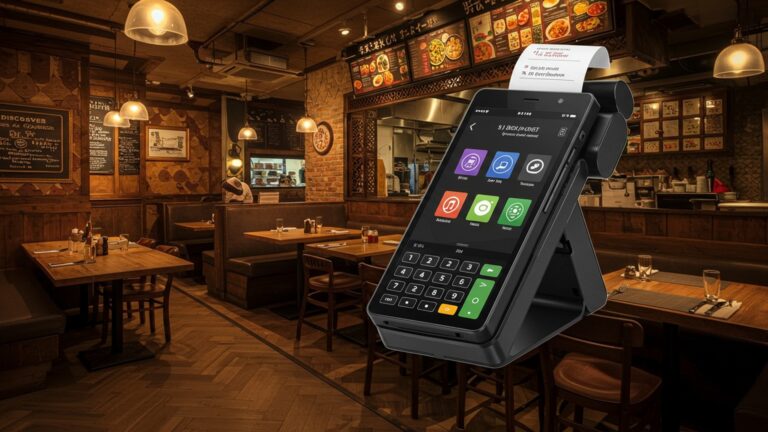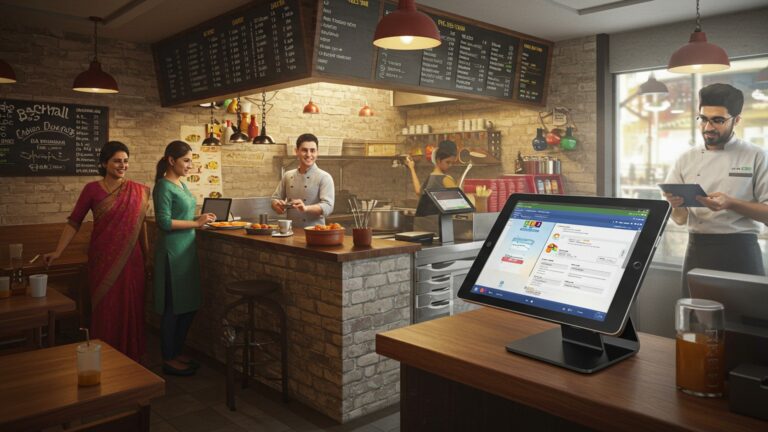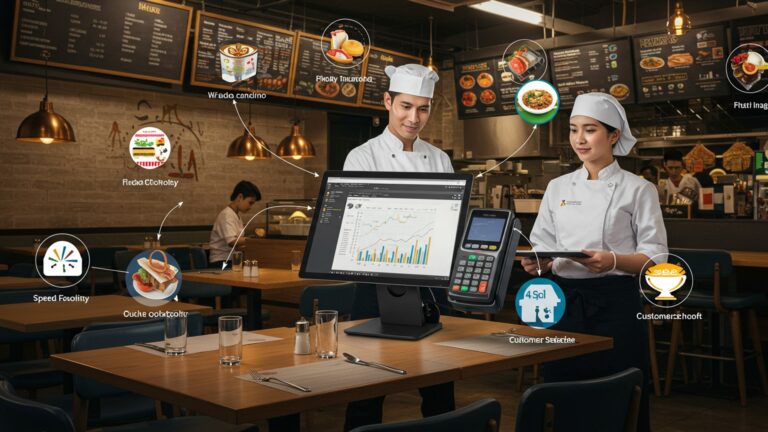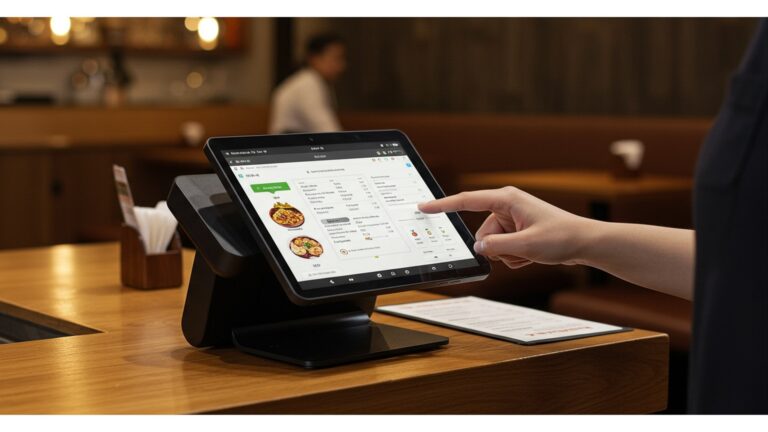Top 6 Online Ordering POS Integrations for Indian Restaurants Guide
The dynamic Indian restaurant industry faces immense pressure to streamline operations as digital ordering platforms like Swiggy and Zomato continue their exponential growth, amplified by the recent surge in QR-code based ordering and direct-to-consumer models. Manually juggling multiple tablets, managing inventory across channels. reconciling disparate sales data creates significant operational friction and impacts profitability. A robust online ordering POS India integration becomes critical, unifying complex menu management, real-time stock updates. aggregated customer insights directly into a single system, thereby enhancing efficiency, accelerating order fulfillment. ultimately elevating the customer experience in this competitive landscape.
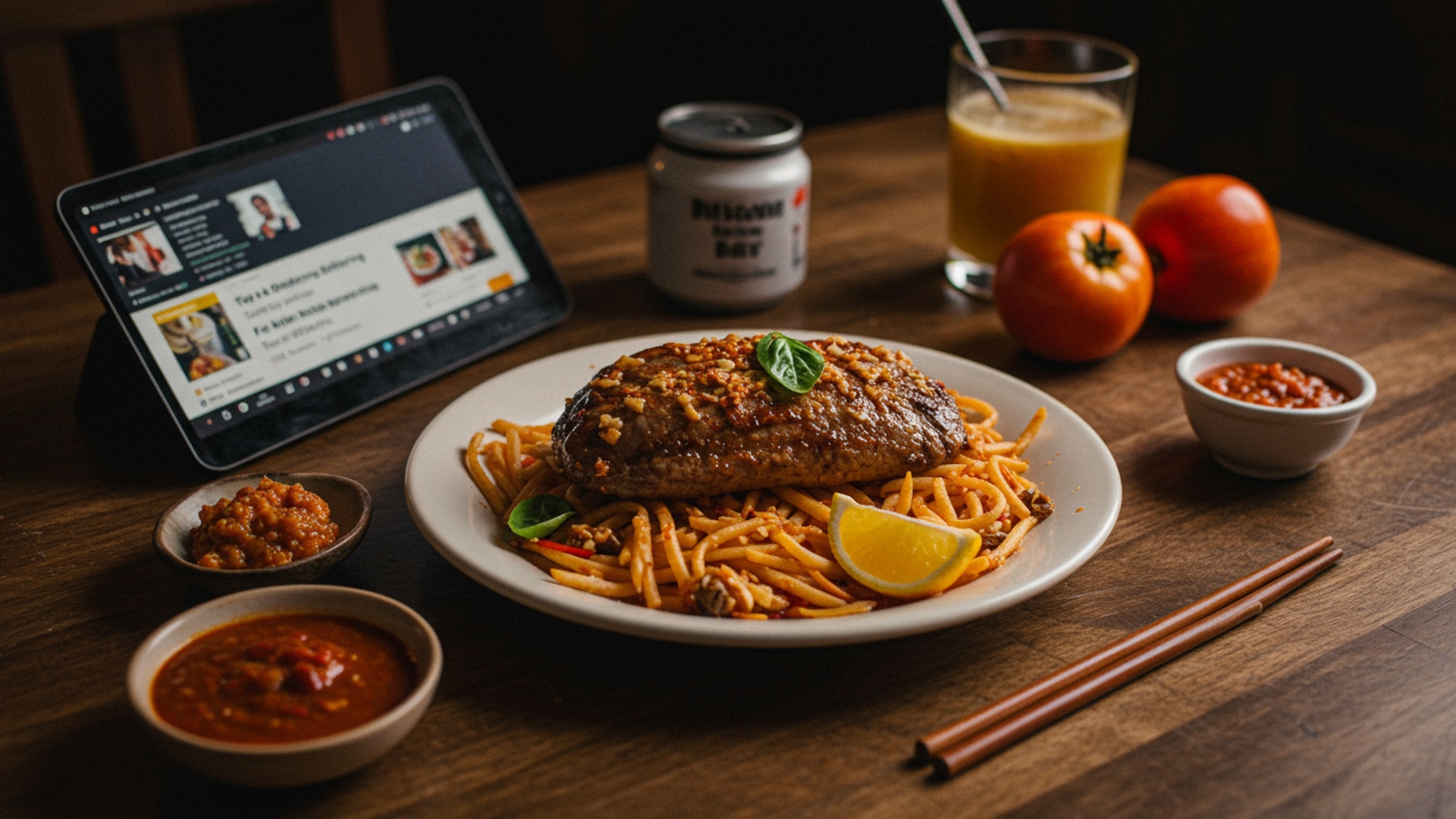
Understanding Online Ordering POS Integration
In today’s fast-paced culinary world, particularly within the vibrant and competitive landscape of Indian restaurants, efficiency is paramount. Two critical systems that power modern eateries are the Point of Sale (POS) system and the online ordering platform. A POS system is essentially the central hub for all sales transactions, inventory management. operational data within a physical restaurant. It handles everything from taking orders and processing payments to tracking stock and generating reports.
Online ordering systems, on the other hand, allow customers to place orders remotely, typically through a website or a mobile app. This has become an indispensable channel for revenue generation and customer convenience, especially in the post-pandemic era. The true power, But, lies in the seamless integration of these two systems. Integration means that your online ordering platform communicates directly and automatically with your POS system. When an order comes in online, it’s immediately sent to your kitchen display system (KDS) or printer via the POS, updates inventory. is recorded as a sale, all without manual intervention. This synchronization is what defines a robust Online ordering POS India solution.
Key Benefits of Seamless Integration for Indian Restaurants
For Indian restaurants, where menu complexity, diverse payment methods. high order volumes are common, integrating online ordering with a POS system offers transformative advantages:
- Streamlined Operations
- Enhanced Customer Experience
- Improved Inventory Management
- Data-Driven Decisions
- Cost Savings and Efficiency
Orders placed online flow directly into your kitchen workflow. This eliminates the need for staff to manually re-enter online orders into the POS, drastically reducing errors and speeding up order processing. Imagine a busy lunch rush where every second counts – direct integration ensures your kitchen receives accurate orders instantly.
With faster and more accurate order processing, customers receive their food quicker and exactly as they ordered it. This leads to higher satisfaction, repeat business. positive reviews – crucial for reputation in a competitive market.
Every online sale automatically deducts items from your inventory in the POS. This real-time tracking helps in managing stock levels more accurately, reducing waste. ensuring you never run out of popular ingredients for dishes like Biryani or Butter Chicken.
An integrated system provides a unified view of all sales data, whether from dine-in or online orders. This allows restaurateurs to assess sales trends, identify peak hours, popular dishes. customer preferences, leading to smarter menu engineering, staffing. marketing strategies. For instance, understanding that ‘Paneer Tikka Masala’ sells exceptionally well online on weekends can inform your ingredient purchasing.
By automating order processing and reducing manual tasks, businesses can optimize staff allocation. Less time spent on administrative work means more focus on food quality and customer service. This translates into tangible cost savings and improved operational efficiency, making your Online ordering POS India setup a true asset.
Essential Features to Look for in an Integrated System
When evaluating Online ordering POS India solutions, consider these critical features to ensure maximum benefit:
- Menu Sync & Management
- Centralized Order Management
- Payment Gateway Integration
- Delivery Management
- Customer Relationship Management (CRM) Capabilities
- Reporting & Analytics
The ability to update your menu once (on the POS) and have those changes reflect automatically across your online ordering platform. This includes pricing, availability, modifiers (e. g. , “add extra spice”). special offers.
A single dashboard to view and manage all orders – dine-in, takeaway, delivery. online. This provides a holistic view of your operations and allows for efficient order fulfillment.
Support for various payment options popular in India, including UPI, net banking, credit/debit cards. digital wallets. Seamless integration ensures quick and secure transaction processing for online orders.
Integration with third-party delivery platforms (like Zomato, Swiggy) or tools for managing your in-house delivery fleet. This includes automatic assignment of delivery personnel, real-time tracking. delivery status updates.
The system should capture customer data from online orders (order history, preferences) to enable personalized marketing, loyalty programs. targeted promotions.
Comprehensive reports that combine data from both online and offline sales, offering insights into sales performance, popular items, customer behavior. operational efficiency.
Top 6 Online Ordering POS Integrations for Indian Restaurants
Choosing the right integration is crucial for your restaurant’s success. Here are six key types of Online ordering POS India integrations, with examples relevant to the Indian market:
1. Petpooja POS Integration
Petpooja is a widely adopted cloud-based POS system in India, known for its extensive integrations and user-friendly interface. It’s a robust solution for restaurants ranging from small cafes to large chains.
- Key Features
- Pros for Indian Restaurants
- Cons/Considerations
- Real-world Application
Petpooja offers native online ordering capabilities and integrates seamlessly with major third-party aggregators like Zomato, Swiggy. DotPe. It provides comprehensive menu management, inventory control, table management. detailed reporting.
Its strong presence and understanding of the Indian market mean it supports local payment gateways and specific operational needs. The ease of integrating multiple online channels into a single dashboard simplifies management for busy Indian eateries.
While comprehensive, the sheer number of features might require a learning curve for new users. Customization for highly niche operational flows might need specific discussions.
A popular Indian street food chain uses Petpooja to manage its multiple outlets. Online orders from their website and aggregator platforms flow directly into Petpooja, which then routes them to the correct kitchen, updates inventory for ingredients like pav bhaji and chaat. consolidates sales reports across all channels.
2. POSist POS Integration
POSist is another leading cloud-based restaurant POS system with a significant footprint across India and globally. It’s designed for scalability and offers a powerful suite of features for various restaurant formats.
- Key Features
- Pros for Indian Restaurants
- Cons/Considerations
- Real-world Application
POSist excels in enterprise-grade features including advanced inventory management, detailed analytics, loyalty programs. robust online ordering integrations. It provides a centralized kitchen display system (KDS) and integrates with a wide array of third-party delivery partners and online ordering platforms.
Its strong reporting capabilities are invaluable for multi-outlet Indian restaurants needing granular control and insights. The system is built to handle high transaction volumes and complex menu structures common in Indian cuisine.
It can be a more premium solution, potentially a larger investment for very small businesses. The extensive features might require dedicated training for staff.
A fine-dining Indian restaurant chain uses POSist to manage its dine-in operations, online reservations. direct online orders. The integration ensures that when a customer orders a complex Thali online, the order details, including customization, are accurately transmitted to the kitchen and reflected in inventory, ensuring a smooth flow from order to delivery.
3. Gofrugal POS Integration
Gofrugal offers comprehensive retail and restaurant management software, including a powerful POS system. It’s known for its broad range of modules and ability to cater to diverse business needs.
- Key Features
- Pros for Indian Restaurants
- Cons/Considerations
- Real-world Application
Gofrugal provides integrated online ordering, inventory management, customer management. financial accounting. Its strength lies in providing an end-to-end solution that can manage almost every aspect of a restaurant business.
Gofrugal’s strong focus on inventory and supply chain management can be particularly beneficial for Indian restaurants dealing with a wide variety of ingredients and suppliers. Its all-in-one approach simplifies vendor management and reporting.
The extensive feature set means it can be more complex to set up initially. Some users might find the interface less modern compared to newer cloud-native solutions, though it’s constantly updated.
A popular South Indian restaurant with a large catering business leverages Gofrugal. Their online catering orders, which often involve bulk quantities of dishes like Dosa and Idli, are directly integrated into Gofrugal’s inventory system, allowing for precise ingredient procurement and production planning.
4. Dedicated Online Ordering Platform Integrations (e. g. , LimeTray, BiteSpeed)
Instead of relying solely on aggregator platforms or a POS’s built-in online ordering, many Indian restaurants opt for dedicated online ordering platforms that then integrate with their chosen POS.
- Key Features
- Pros for Indian Restaurants
- Cons/Considerations
- Real-world Application
Platforms like LimeTray and BiteSpeed focus specifically on building a restaurant’s own branded online ordering website and mobile app. They offer robust menu builders, marketing tools, loyalty programs. then integrate with various popular POS systems (e. g. , Petpooja, POSist, Gofrugal) to send orders directly to the kitchen.
This approach allows restaurants to own their customer data, build their brand identity. avoid commissions to aggregators on direct orders. The integration ensures operational efficiency while retaining brand control.
Requires an additional vendor and potentially a separate subscription fee. Marketing efforts are needed to drive traffic to your own platform, which might be more challenging than relying on aggregator visibility.
A newly opened cafe specializing in fusion Indian cuisine uses LimeTray for its online presence. When customers order their signature “Butter Chicken Croissant” through the cafe’s website, LimeTray sends the order directly to the café’s Petpooja POS, which then prints the order for the kitchen staff, ensuring quick and accurate fulfillment.
5. Direct Integrations with Food Aggregators (Zomato, Swiggy, DotPe)
In India, food aggregators are a massive source of online orders. Integrating directly with these platforms is non-negotiable for many restaurants.
- Key Features
- Pros for Indian Restaurants
- Cons/Considerations
- Real-world Application
Most modern POS systems offer direct API integrations with Zomato, Swiggy. other local aggregators. This means orders placed on these platforms automatically appear in your POS, rather than requiring a separate tablet for each aggregator. DotPe offers a unique QR-code based ordering system which can also integrate with a POS.
Maximizes reach to a vast customer base without manual order entry. Reduces errors and streamlines operations significantly, as staff don’t need to juggle multiple aggregator tablets.
While integrated, commission fees from aggregators can be substantial. Reliance on third-party platforms for a significant portion of business can impact profitability.
A popular delivery-only kitchen (cloud kitchen) focused on regional Indian curries heavily relies on Zomato and Swiggy. Their POS system has direct API integration with both platforms, meaning every order for a “Laal Maas” or “Goan Fish Curry” appears instantly on their KDS, allowing them to manage high volumes efficiently without missing a single order.
6. Custom API Integrations for Enterprise-Level Operations
For large restaurant chains or those with unique operational requirements, off-the-shelf solutions might not suffice. Custom API (Application Programming Interface) integrations offer the highest level of flexibility and control.
// Example of a simplified API call for sending an online order to a POS
// This is a conceptual example and actual implementation will vary greatly POST /api/v1/orders
Content-Type: application/json
Authorization: Bearer YOUR_API_KEY { "orderId": "OL-202300123", "customerName": "Rahul Sharma", "customerPhone": "+919876543210", "deliveryAddress": "123, MG Road, Bangalore", "orderItems": [ { "itemId": "SKU001", "itemName": "Chicken Biryani", "quantity": 2, "price": 350. 00, "notes": "Extra spicy" }, { "itemId": "SKU005", "itemName": "Gulab Jamun", "quantity": 1, "price": 80. 00 } ], "totalAmount": 780. 00, "paymentMethod": "UPI", "orderType": "Delivery"
}
- Key Features
- Pros for Indian Restaurants
- Cons/Considerations
- Real-world Application
Custom integrations allow businesses to build bespoke bridges between their proprietary online ordering platforms (or other custom systems) and their POS. This ensures data flows exactly as needed, with specific business logic applied.
Offers unparalleled flexibility, scalability. control over data. Ideal for large chains with complex loyalty programs, supply chain integrations, or unique customer journeys.
High initial development cost and ongoing maintenance. Requires technical expertise and resources. Not suitable for small or medium-sized restaurants due to complexity and expense.
A national chain of premium Indian restaurants with a sophisticated loyalty program and a custom-built mobile app uses API integration. Their app captures extensive customer preferences and order history. Through a custom API, this data is seamlessly pushed to their central POS, allowing for highly personalized offers and service, while also managing inventory across hundreds of outlets for dishes like their signature ‘Dal Makhani’.
Comparing Online Ordering POS Integration Approaches
Here’s a brief comparison to help you interpret the different approaches:
| Integration Type | Primary Benefit | Best For | Considerations |
|---|---|---|---|
| Integrated POS (e. g. , Petpooja, POSist) | All-in-one management, streamlined operations. | Restaurants seeking a single vendor for most needs. | Vendor lock-in risk, feature set might be rigid. |
| Dedicated Online Ordering Platforms (e. g. , LimeTray) | Brand control, direct customer relationship. | Restaurants wanting their own branded online channel. | Requires marketing effort to drive traffic to your platform. |
| Food Aggregator Integrations (e. g. , Zomato, Swiggy) | Maximum reach, access to large customer base. | Restaurants prioritizing volume from existing platforms. | High commission fees, less control over customer data. |
| Custom API Integrations | Ultimate flexibility, tailored workflows, data control. | Large chains, unique operational models, high customization needs. | High development cost, requires technical expertise. |
Implementing Your Online Ordering POS Integration: A Step-by-Step Guide
Successfully integrating an Online ordering POS India solution requires a structured approach:
- Assess Current Needs & Systems
- Research & Select a Solution
- Data Migration & Setup
- Staff Training
- Testing & Go-Live
- Continuous Monitoring & Optimization
Evaluate your existing POS, online ordering channels, kitchen workflow. pain points. What specific problems are you trying to solve? What features are non-negotiable?
Based on your assessment, research vendors that offer the required integrations. Request demos, compare features, pricing. customer support. Don’t hesitate to ask for references from other Indian restaurants.
Work with your chosen vendor to migrate existing menu data, customer data. inventory details. This is a critical phase where accuracy is key. Ensure your menu structure, modifiers. pricing are consistent across all platforms.
Train your front-of-house, kitchen. management staff thoroughly on the new integrated system. Provide clear instructions on how to handle online orders, manage inventory. access reports. Role-specific training is essential.
Before a full launch, conduct extensive testing. Place dummy orders, process cancellations. simulate various scenarios to ensure the integration works flawlessly. Address any glitches before going live to avoid operational disruptions.
Post-launch, continuously monitor performance. assess sales data, customer feedback. operational efficiency. Use insights to optimize your menu, promotions. delivery processes. Technology evolves, so periodically review your system’s capabilities.
Challenges and How to Overcome Them
While the benefits are immense, integrating an Online ordering POS India system can present challenges:
- Data Security & Privacy
- Solution
- Integration Complexity
- Solution
- Vendor Lock-in
- Solution
- Cost
- Solution
- Staff Resistance to Change
- Solution
Handling sensitive customer and financial data requires robust security measures.
Choose vendors with strong security protocols, data encryption. compliance certifications (e. g. , PCI DSS for payment processing). Ensure data storage adheres to Indian regulations.
Connecting disparate systems can be technically challenging, especially with multiple third-party platforms.
Opt for vendors with proven integration capabilities and dedicated support teams. Prioritize solutions with pre-built connectors for popular Indian aggregators and payment gateways.
Becoming overly reliant on a single vendor can limit future flexibility or lead to higher costs.
Look for systems that offer open APIs or have partnerships with a wide ecosystem of complementary services. interpret exit strategies and data portability options.
The initial investment and ongoing subscription fees can be significant.
Conduct a thorough cost-benefit analysis. Focus on the ROI in terms of efficiency gains, increased sales. reduced errors. Many providers offer tiered pricing to suit different business sizes.
Employees might be hesitant to adopt new technology.
Involve staff in the selection process, provide comprehensive training, highlight the benefits to their daily tasks. offer ongoing support. Celebrate early successes to build confidence.
Future Trends in Online Ordering POS Integration for Indian Restaurants
The landscape of Online ordering POS India is continuously evolving. Indian restaurants should keep an eye on these emerging trends:
- AI & Machine Learning for Personalization
- Voice Ordering
- IoT in Kitchens
- Hyperlocal Delivery Optimization
- More Sophisticated CRM and Loyalty Programs
- Cloud-Native & Mobile-First Solutions
Expect more intelligent systems that use AI to assess customer preferences and suggest personalized recommendations, dynamic pricing. targeted promotions, enhancing the online ordering experience.
Integration with smart assistants (Google Assistant, Alexa) for hands-free order placement is gaining traction, offering a new convenience channel.
Integration of POS with smart kitchen equipment (e. g. , ovens, refrigerators) for automated inventory management, temperature monitoring. predictive maintenance.
Advanced algorithms for optimizing delivery routes, batching orders. integrating with a wider network of hyperlocal delivery partners to reduce delivery times and costs.
Deeper integration of customer data to create highly customized loyalty programs, subscription models. engagement strategies that foster stronger customer relationships.
A continued shift towards fully cloud-based POS systems accessible from any device, allowing for greater flexibility and remote management for restaurateurs on the go.
Conclusion
Embracing robust online ordering POS integrations is no longer a luxury but a fundamental necessity for Indian restaurants navigating today’s dynamic digital landscape. Gone are the days of juggling multiple tablets for Swiggy, Zomato. your direct website; the true power lies in a unified dashboard that automates order flows, ensuring real-time menu updates and inventory synchronization. I’ve personally observed how a well-integrated system transforms chaotic rush hours into smooth operations, freeing up staff to focus on guest experience rather than manual data entry. My key tip for you is to prioritize systems offering robust API capabilities and comprehensive support, much like the advanced cloud-based solutions discussed in our Guide to 10 Best Cloud-based Restaurant POS India Systems. This strategic move isn’t just about efficiency; it’s about elevating your brand, reducing operational friction. ultimately, securing your restaurant’s prosperous digital future.
More Articles
7 Essential Features of Restaurant POS Software India for Seamless Operations
Guide to 10 Best Cloud-based Restaurant POS India Systems for Efficiency
Learn 5 Essential Online Ordering POS India Features for Your Restaurant
How to Select the Best POS Software Guide for Business Efficiency
Discover 7 Affordable Restaurant POS India Solutions for Small Businesses
FAQs
Why should an Indian restaurant even bother integrating their online ordering with their POS system?
It’s super vital for streamlining operations! Imagine orders from Swiggy, Zomato, or your own website popping straight into your kitchen display system and billing. No more manual entry, fewer mistakes. faster service, which means happier customers and a smoother workflow for your staff. It truly modernizes your entire order management.
What kind of common problems or ‘headaches’ can integrating online ordering with a POS system actually fix for us?
A lot! It eliminates manual order entry errors, prevents missed orders, helps manage inventory more accurately as sales are recorded instantly. gives you a unified view of all sales data. Plus, it frees up staff from juggling multiple tablets, letting them focus on customer service instead of data entry.
Sounds great. is setting up these online ordering and POS integrations a really complicated process?
Not usually! Most modern POS systems and online ordering platforms are designed for relatively straightforward integration. Many providers offer dedicated support to guide you through the setup, making sure everything talks to each other smoothly without too much technical hassle on your end. The goal is to make it as plug-and-play as possible.
With so many options, how do I figure out which of these top integrations is the best fit for my specific Indian restaurant’s needs?
You’ll want to consider a few key things: your current POS system’s compatibility, the online ordering platforms you primarily use (like third-party aggregators or your own website), your budget. the specific features you need, like advanced inventory management or loyalty programs. It’s wise to look for a solution that’s flexible, scalable. has good customer support.
Okay. will investing in online ordering and POS integration genuinely help my Indian restaurant make more money?
Absolutely! By reducing operational errors, speeding up order fulfillment, improving customer satisfaction (which leads to repeat business). providing better data for informed business decisions, these integrations typically lead to increased efficiency and, ultimately, a healthier bottom line. You save on labor, reduce waste. can serve more customers effectively.
What if my existing POS system isn’t one of the ones specifically highlighted or mentioned as compatible in the guide?
Don’t worry! Even if your specific POS isn’t explicitly listed, many integration solutions are designed to be quite versatile. It’s always best to reach out to your current POS provider or the online ordering integration service directly. They can often confirm compatibility, suggest workarounds, or offer alternative integration methods that might suit your setup.
Does this guide specifically consider the unique operational aspects and challenges faced by Indian restaurants when it talks about POS integrations?
Yes, it does. The guide is tailored to the Indian restaurant context, acknowledging factors like diverse menu items, the prevalence of specific delivery partner ecosystems (like Swiggy and Zomato). the need for efficient handling of both dine-in and high-volume delivery orders typical in the Indian market. It aims to provide relevant solutions for these specific needs.

